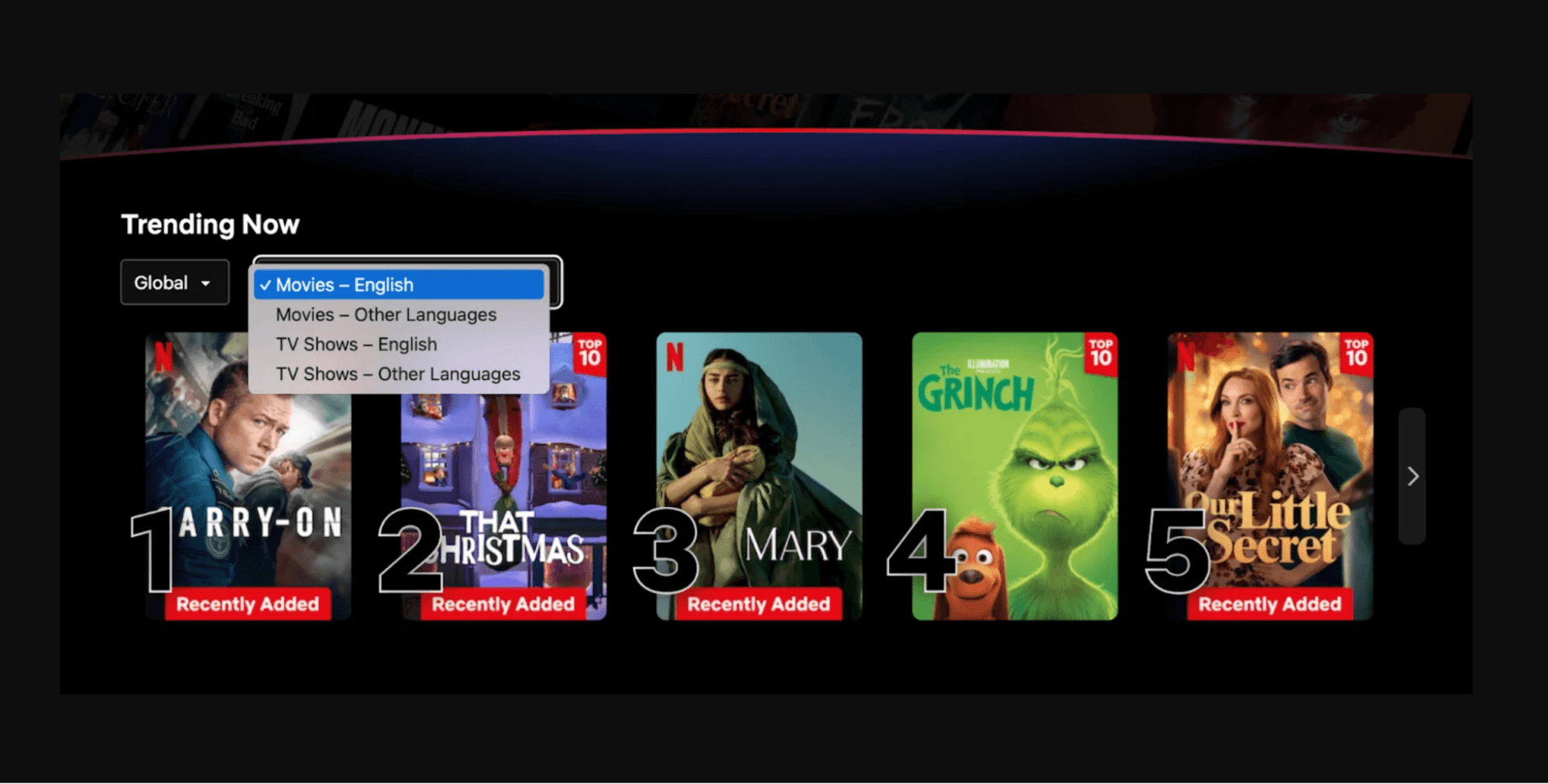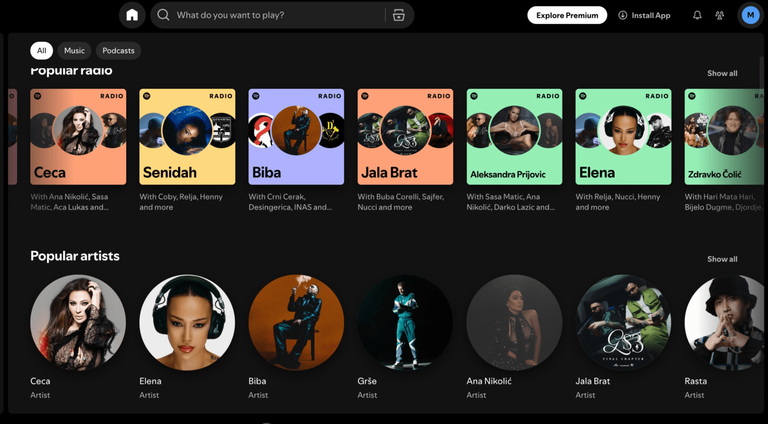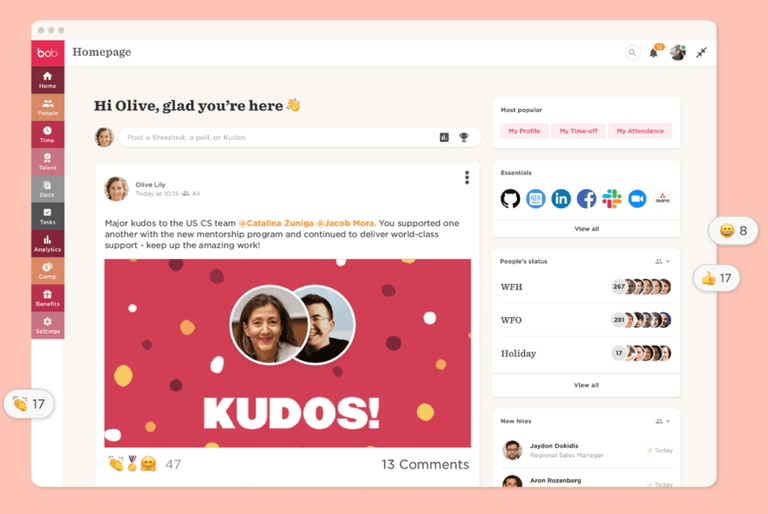
8 Video Game Localization Examples You Won’t Forget
Imagine playing Dragon Quest XI in English where you walk into a quaint little village and hear everyone talking… in haikus. Or what if you start playing Witcher 3 in…

Ever wondered why Netflix feels like home wherever you stream it? Or why Airbnb listings seem perfectly tailored when you book abroad? The secret is in successful product localization.
It’s about adapting not just the language, but the entire user experience to fit perfectly into local markets.
When done right, product localization turns your product from “just another app” into something that feels familiar, something people actually connect with. But if it misses the mark, it can confuse users, frustrate them, or send them straight to a competitor who just gets them better.
🚀 Lokalise is built with product managers in mind
Lokalise is an all-in-one localization platform that fuels faster product launches with 3x less localization work. Discover why companies like Mastercard, Starbucks, and Hyndai use Lokalise for product localization.
Product localization is about making your product feel right at home, no matter where your users are. It’s about translating and adjusting your content, design, and features so everything feels natural and familiar to people in each market.
It’s the reason Spotify serves up playlists that match your local vibe, or why Airbnb shows you prices, photos, and places that make sense wherever you’re browsing from.
At the end of the day, localization helps your product feel less like a foreign tool (and more like something made just for them).
So, what’s the real benefit of localizing your product? In short, when something feels familiar and easy to use, people stick with it. They buy, they come back, and they recommend it to others. And the more your product feels like it belongs in someone’s world, the more they’ll trust your brand.
People are drawn to things that feel like they were made for them. When your product speaks their language (literally and culturally), they’re more likely to give it a try and recommend it to their friends.
A localized product just feels better. It’s easier to navigate, more relevant, and more useful. That means fewer people bouncing and more people becoming loyal, happy users.
When people understand what your product does and how to buy it—in their own language, with local payment methods—they’re far more likely to follow through. Localization removes the friction that kills conversions.
Many brands do only surface-level translations. This is how they miss the cultural nuances that truly matter. But if you go a level deeper, customers will notice. This is what will encourage them to choose your product over less-localized competitors.
When you respect and understand local culture, your customers feel it. They’ll trust your brand more and become loyal supporters, helping you succeed long-term. It’s a how you show your audience you genuinely care about their experience (not just their wallets).
The process of product localization is much more manageable and straightforward when broken down. Here’s how it usually works, who does what, and how long each part typically takes.
First, you need a solid understanding of your target audience and local market. Product or localization managers usually coordinate this, doing research on competitors, user preferences, cultural norms, and potential market fit.
This is where your product really starts to take shape for new markets. Translators and localization experts adapt your content to feel natural, accurate, and culturally appropriate. The timeframe varies depending on how much content you have and how complex or specialized it is.
How long it takes: It depends on your tech stack, product complexity, and resources. If you use AI in your localization workflow, you can significantly accelerate this timeline.
✨ Get inspired
Discover how Life360 localized their entire app (500K+ words) into 5 languages in one month.
Designers adjust visual elements and layouts to ensure your product looks and feels right for local users. The timeline depends on your product’s complexity and how many adjustments are needed. For example, languages that read right-to-left usually require more careful redesign.
Here, developers adapt technical aspects such as payment methods, date formats, currency support, and SEO localization. The timeframe depends largely on how adaptable your existing technical infrastructure is and whether significant changes are required.
You’ll now test your localized product with real users to catch any final issues. Their feedback helps you identify problems early and make critical adjustments before the official launch.
After launch, continue collecting user feedback, monitoring usage data, and regularly updating your localization to improve user experience. This is a continuous process rather than a one-time project.
Product localization doesn’t have to be complicated. But it does require a clear process. Here’s what it typically looks like in practice, step by step.
First, you need to understand your new market. This means researching things like language, culture, user preferences, and even local competitors. The goal is to clearly see how your product can best fit into people’s daily lives.
Next, your content gets translated. Good product localization involves brand localization, messaging, visuals, examples, and even jokes to make sense locally. It also often means adjusting things like currencies, dates, and payment methods.
You might need to tweak your design or interface so that everything looks right for each individual market. Also, some languages take up more space or read from right-to-left, so thoughtful adjustments are key to making your product feel natural everywhere.
💡 Pro tip
If you’ve found a product-market fit and want to deliver great UX in multiple markets simultaneously, then you’d want to be as efficient as possible. Agility is everything in this scenario. Learn more about design-stage localization and why it matters for reducing time-to-market.
Localization also means adapting technical parts of your product, such as app stores, SEO, and even back-end functionality. You need to ensure everything functions seamlessly in each market (no bugs and no frustrating experiences).
This step is crucial, especially in SaaS localization. It’s important to get your localized product in front of actual people from the target market. Testing will show you what feels natural and what doesn’t, allowing you to make final adjustments based on real feedback.
Finally, it’s time to launch your localized product. But remember, localization isn’t a one-time job. Keep gathering feedback, learn from your users, and regularly improve your product. It’s an ongoing conversation between your product and the people using it.
📚 Further reading
Ever heard of continuous localization? With such a workflow, your localized content is always ready to be pushed live. It can help you reduce the time and money spent on keeping your content up to date, so make sure to read our guide and learn more.
Localization works best when it’s intentional. You shouldn’t treat it as an afterthought. Here’s what you need to get off to a strong start and make sure you deliver products your customers actually want to use.
Before localizing anything, you need to invest time into understanding your target market. This means going beyond demographics. Dive into local preferences, cultural norms, buying behaviors, and even common frustrations users might have.
Tools like surveys, social listening, or competitor analysis can help you discover what your potential customers genuinely care about. The more insights you gather upfront, the better you’ll tailor your product for a strong local fit.
Localization isn’t something you can successfully manage from afar. Partner with people who deeply understand the market. This includes native translators, cultural advisors, or local UX designers.
These experts spot subtle cultural nuances you’d likely miss, they’ll help you avoid weird translations, and ensure your messaging lands perfectly with your audience. Regularly meet, discuss ideas, and let their feedback shape your product decisions.
Forget about waiting months for a big localization reveal. It doesn’t work that way. Instead, it’s smarter to break the work into smaller chunks and iterate quickly. An agile approach means translating, designing, and testing your product in manageable steps, so you can spot and fix problems early.
Get feedback frequently (ideally from real local users), and improve your product bit by bit. This method not only saves you time and resources, but also helps ensure your final localized product genuinely resonates with users.
💡 Pro tip
Make sure your product’s technical side can easily handle localization. Things like date formats, currencies, payment methods, and SEO metadata should adapt smoothly for different regions. Planning for this from the start will save you headaches down the line. Check out our article on internationalization (i18n) to learn more.
Localization helps your product thrive in new markets, but it’s not always easy. Here are the most common challenges you might run into, and practical tips on how to overcome them.
| Challenge | How to overcome this |
| Timing and delays | Plan early, align teams, and build extra time into your roadmap |
| Localization quality and consistency | Use style guides, trusted translators, and centralized tools |
| Market-specific needs | Work with local experts and test with real users in each market |
Localization often takes longer than expected. It’s not just about translating content. There are always more design tweaks than you’d hoped for, then technical updates, and user testing… This all takes time. And if teams work in silos, delays pile up quickly.
What to do: Plan ahead. Build localization into your product roadmap early, and make sure teams communicate regularly. A shared timeline and clear ownership can help you avoid last-minute rushes.
With multiple languages and markets, keeping the quality high and the brand voice consistent is a real challenge. A bad translation or confusing UX in one market can damage your reputation, which is why localized digital marketing is essential. It ensures your messaging, design, and user experience resonate authentically with each audience while staying true to your brand.
What to do: Use style guides, glossaries, and centralized tools that help everyone stay aligned. Work with experienced translators and local reviewers who understand both the language and your product.
Each market has its own quirks. From unique cultural norms to legal regulations and specific user habits and expectations, you name it. What works in one country might fall flat (or even offend) in another.
What to do: Involve local experts early and often. They’ll help you spot red flags, adapt content properly, and make smart product decisions that fit the local context.
If you came this far, you’re probably thinking: “This all sounds nice, but what does it actually look like in practice?” Fair point.
Let’s explore how some of the world’s most successful companies have used product localization to connect with users globally (and how you can apply the same thinking).

Netflix built its localization strategy around local storytelling. Instead of simply translating existing content, they invest in producing original shows for each region.
Think “Money Heist” in Spain, or “Squid Game” in South Korea. You’ll notice that these shows reflect local culture and values, but they also manage to became global hits thanks to advertising localization.
Netflix also adapts everything from subtitles and dubbing to the thumbnails you see on the homepage, tailoring the experience based on viewing habits and preferences in each country. As such, it’s one of the best localization examples out there.
Numbers at a glance

Airbnb’s localization strategy centers on building trust. From localized listings and customer support to culturally sensitive imagery and tone, every part of the platform is tailored to make people feel safe and at home.
This is true regardless of if they’re booking in Tokyo or Tuscany. They’ve even localized their marketing strategy, and are adapting campaigns to reflect local customs, festivals, and values.
Numbers at a glance:

Spotify doesn’t just offer a translated app. It curates music experiences that reflect each market. From locally trending playlists to region-specific homepage content, their goal is to make users feel understood the moment they open the app. Even payment methods and onboarding flows are adapted to match local behaviors.
Numers at a glance:

HiBob realized that if they wanted to scale globally, they couldn’t afford messy or slow localization. So, they split their content into two clear tracks: product and marketing. This helped them build a clean, efficient workflow around each.
With the help of Lokalise, they made it easier for teams to collaborate, reduced back-and-forth, and launched new languages much faster. Their help center is now available in multiple languages, which makes it easier for customers around the world to get support when they need it.
Number at a glance:

GoCrypto was expanding fast. But every new language was a headache. It took too long, and their dev team was overwhelmed. So they shifted to a continuous localization approach using Lokalise.
This let them translate and launch new languages in just a few weeks, without disrupting their product roadmap. It worked: in just six months, they expanded into 13 countries and nearly doubled their language count.
Number at a glance:
If there’s one thing to take away, it’s this: product localization is about making people feel like your product was made for them. Not just by changing the language, but by understanding their culture, habits, and expectations, and meeting them there.
Whether you’re launching in one new country or scaling to twenty, successful localization helps your product feel relevant, builds trust faster, and unlocks real growth.
Start small if you need to. Test, learn, and improve. But don’t treat localization as a final step. It’s an integral part of building a great product from the beginning.Want to learn more about product localization? Learn more about cooking up localization success with product teams and continue exploring Lokalise blog.
Author
Mia has 13+ years of experience in content & growth marketing in B2B SaaS. During her career, she has carried out brand awareness campaigns, led product launches and industry-specific campaigns, and conducted and documented demand generation experiments. She spent years working in the localization and translation industry.
In 2021 & 2024, Mia was selected as one of the judges for the INMA Global Media Awards thanks to her experience in native advertising. She also works as a mentor on GrowthMentor, a learning platform that gathers the world's top 3% of startup and marketing mentors.
Earning a Master's Degree in Comparative Literature helped Mia understand stories and humans better, think unconventionally, and become a really good, one-of-a-kind marketer. In her free time, she loves studying art, reading, travelling, and writing. She is currently finding her way in the EdTech industry.
Mia’s work has been published on Adweek, Forbes, The Next Web, What's New in Publishing, Publishing Executive, State of Digital Publishing, Instrumentl, Netokracija, Lokalise, Pleo.io, and other websites.

Imagine playing Dragon Quest XI in English where you walk into a quaint little village and hear everyone talking… in haikus. Or what if you start playing Witcher 3 in…

Top Things to Know: What is CMS Localization? Content Management System (CMS) localization—also known as CMS internationalization, or CMS translation—consists of configuring your CMS to open your content to different…

If you want to ace your localization projects and open your product to different markets, you need strict organization, monitoring, and checking. Well-localized content will benefit your business on many levels. Your global visibility will increase, and so will your sales. Your goal: making sure that your localization strategy is strong and that your product makes sense f

Behind the scenes of localization with one of Europe’s leading digital health providers
Read more Case studies
Localization workflow for your web and mobile apps, games and digital content.
©2017-2025
All Rights Reserved.